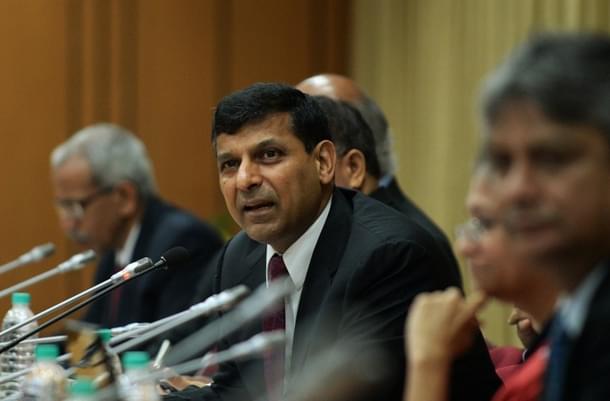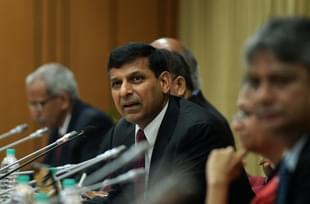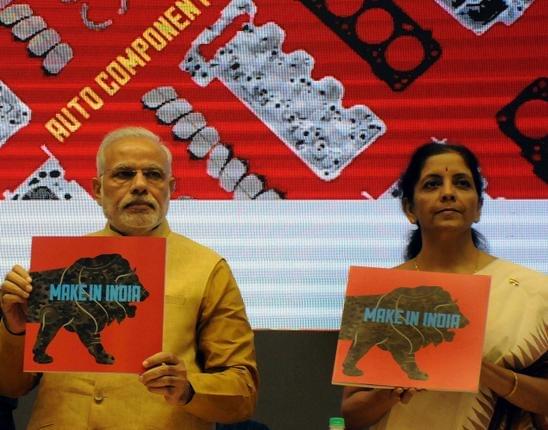Economy
Make in India: Please Listen to Raghuram Rajan
Harsh Vora
Dec 13, 2014, 12:59 AM | Updated Feb 10, 2016, 05:16 PM IST
Save & read from anywhere!
Bookmark stories for easy access on any device or the Swarajya app.


Unless the Make in India campaign is reengineered with the right incentives and made to fit into the true definition of ‘minimum’ government, it will remain yet another welfare programme.
Dr. Raghuram Rajan, Governor, Reserve Bank of India, today (on December 12, 2014) delivered a rational counter to Narendra Modi’s version of Make in India campaign in the Bharat Ram Memorial Lecture in New Delhi. Saying that while the aim of boosting manufacturing in India is certainly laudable, the form in which it is presently being shaped and directed by the government is potentially fraught with danger.
This speech could not have come at a more opportune time. The Modi government has completed 200 days and its accomplishments so far have not particularly been at par with expectations. That said, the reasons for the government’s rather sluggish speed at precipitating reform measures are understandable, even if not necessarily acceptable. In a hugely populous country like India where most quarters of the population are uninformed about what constitutes good economics, it may not augur well for a government to take unpopular decisions at inopportune times.
To be sure, the speed of reforms is certainly important for any government wanting to push the sconomy to higher growth rates, but far more important is to make sure that inexpedient decisions taken at not-so-ideal times do not cost votes. After all, it is not in every election that India manages to secure a stable, able, and willing Prime Minister.

Given that a government (any government) must unavoidably manage ground political realities—such as timing policy announcements keeping in mind the imminence of state elections or negotiating controversial clauses with the Opposition in Rajya Sabha—the reforms process can become a long and arduous task. This is not to say that all moves of the BJP are necessarily to be viewed in similar light. It was not judicious, for example, for the government to raise excise duties on petrol after initially having lowered its prices in response to the global oil slump. Similarly, it does not comprise good economics to increase tariffs and restrictions on import of raw materials so as to boost select domestic industries while hurting others.
That is the issue which Rajan touched upon in his speech today when he said, “I am counseling against an export-led strategy that involves subsidizing exporters with cheap inputs.” Instead of focusing the nation’s limited resources on creating the right environment for businesses to flourish on their own feet, Modi government has increasingly been resorting to providing sops, credits, and subsidies of various kinds to domestic manufacturers while also putting undue restrictions on imported products. This type of active targeting by the State hardly makes for a truly “minimum” government that Modi so ardently advocated in his pre-election speeches.
Instead of keeping its hands off markets and allowing India’s entrepreneurs to choose their own direction, the BJP government has been using State apparatus to proactively direct and manage the collective potential of India’s industries. What’s the problem with that? Well, it is beyond the capacity of any government, or a bunch of bureaucrats, to determine where that potential lies. Finding it requires access to very complex information about the constantly changing dynamics of demand and supply, and no individual or group of individuals in the government can possibly claim to know or act upon those complex dynamics.

The fact that India’s industries have tremendous potential is incontrovertible. However, the best tool to invoke that potential is the free market that is devoid of active management (in the form of import restrictions) by bureaucrats. For example, in one of my earlier pieces for Swarajya, I had discussed the issue of Modi’s proclivity to raise duties on steel imports from the present 7.5% to 12.5% in response to pressures from the domestic steel industry lobby. I had argued that the increased costs to end-consumers, resulting from higher import duties (and therefore higher cost of the final product) would far outweigh the selective benefits to the steel industry.
The fact that import restrictions, designed to encourage import substitution (that is, manufacturing goods at home instead of importing them) do not make economic sense, was also highlighted by Rajan in his following statement: “A second possible misunderstanding is to see ‘Make in India’ as a strategy of import substitution through tariff barriers.” He further underscored that “this strategy has been tried and it has not worked because it ended up reducing domestic competition, making producers inefficient, and increasing costs to consumers.”
To be fair to Modi, he has certainly been making strides at removing excessive regulatory barriers while also improving the ease of doing business. His intention is therefore virtuous, but that simply does not suffice—for economies respond to right incentives, not to intentions, no matter how noble. The Make in India campaign has raised huge hopes about India’s economic revival. But unless it is reengineered with the right incentives and made to fit into the true definition of a “minimum” government, it will remain yet another welfare programme with not much to show in terms of real reforms.





